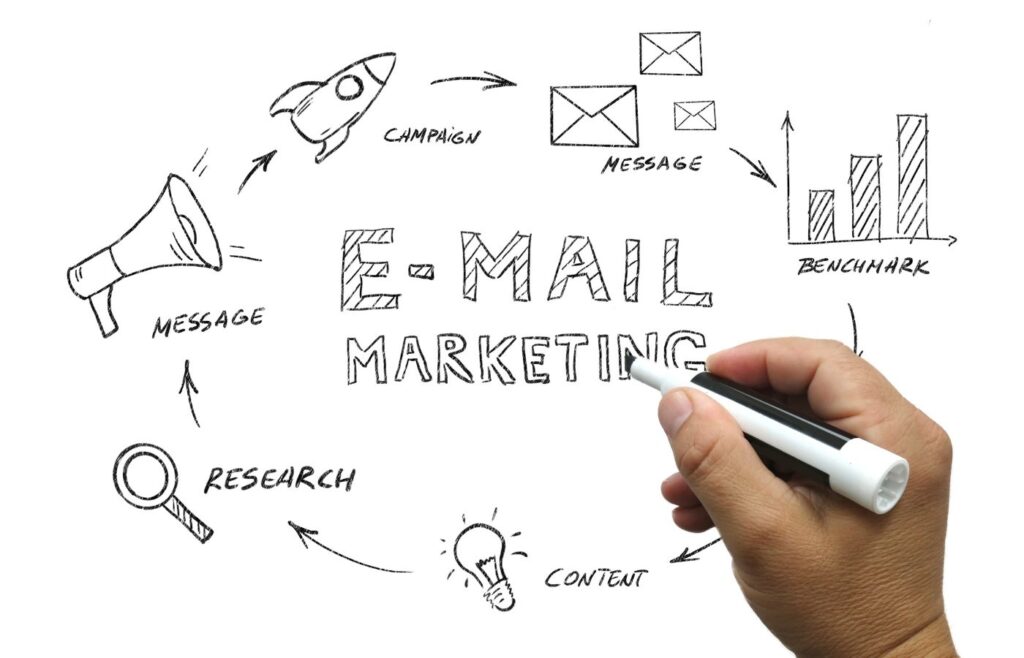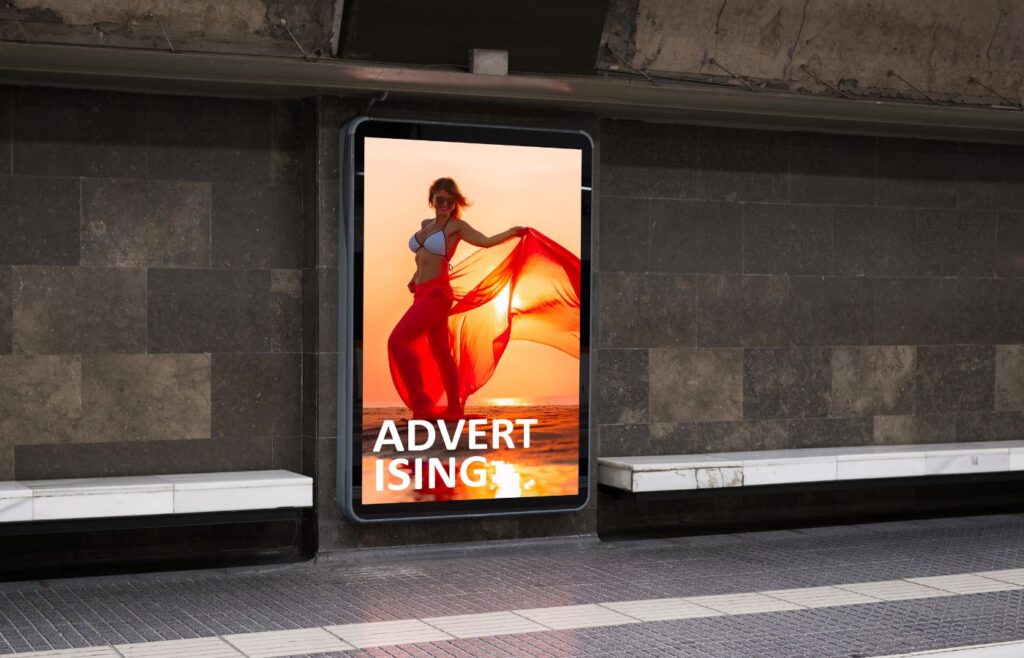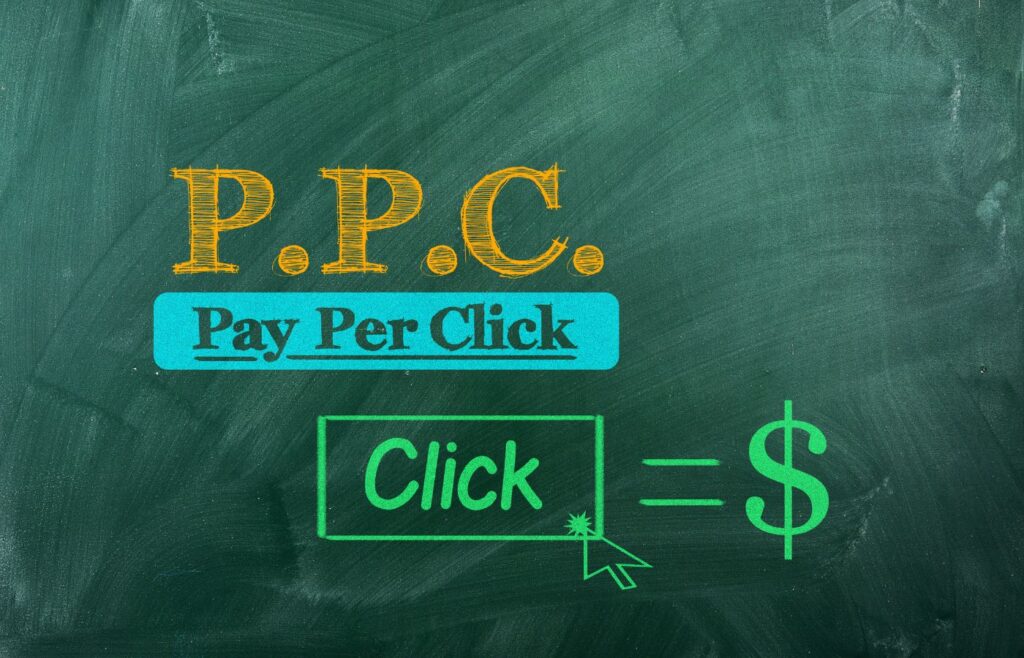Data is great – we absolutely love it. As marketers, getting the correct data and insight to inform our content marketing strategies is vital. Sharing is caring, so we’ve compiled a list of marketing statistics from some of our favourite brands doing great research so you don’t have to. From copywriting and social media marketing to blogging and AI, here are 180 marketing statistics to shape your marketing strategy.
Top content marketing statistics
In today’s digital age, content marketing has become an essential strategy for businesses aiming to engage their audiences and drive conversions. And understanding the latest trends and data is crucial for creating effective content strategies. First and foremost, we dive into the top content marketing stats that highlight the current industry landscape. Whether you’re refining your current approach or developing a new strategy, these statistics will provide a solid foundation for making informed decisions and achieving your marketing goals. Let’s go…

- In 2024, the content marketing industry will grow to be worth an estimated $600 billion (Forbes).
- In 2023, video was the primary form of content created (50%), followed by images (47%) and blogs (33%) (Hubspot).
- 62.3% of content marketers reported including interactives in their content marketing strategy (Siege Media).
- 81% of marketers view content as a core business strategy (CMI).
- 75% of marketers say SEO is their most efficient content marketing tactic (Blogging Wizard).
- 40% of B2B marketers have a documented content marketing strategy; 33% have a strategy, but it’s not documented, and 27% have no strategy (CMI).
- Marketers rank email marketing, paid search/ads and organic search as the most effective channels (Litmus).
- 51% of businesses investing in content marketing publish content daily (The Manifest).
- 83% of marketers believe it’s more effective to create higher quality content less often (Hubspot).
- Brands that publish 16 or more blog posts a month are likely to generate 4.5 times as many leads compared to businesses that don’t publish as often (DemandSage).
Copywriting statistics
Effective copywriting is the backbone of compelling marketing campaigns, driving engagement and conversions through persuasive and impactful messaging. Staying informed about the latest copywriting trends and data is essential for creating content that resonates with your audience. Next up on our list of marketing statistics, we take a look at the top copywriting statistics that shed light on the most successful techniques and practices in the industry. Whether you’re crafting headlines, social media posts, or email campaigns, these stats will help you produce high-quality copy and make results-driven decisions.

- Nearly 80% of small business owners and marketers report writing content themselves. 17% hire in-house writers, and 14% work with freelancers (Semrush).
- 20+ years of eye-tracking research confirms that most internet users only skim and skip around a webpage for relevant info. (Nielsen Norman Group)
- Adding the word “because” with a reason to your CTAs can increase compliance by 34%. (Langer, 1978)
- Headlines with 10-13 words attract twice as much site traffic and 1.5 times as many shares as those under seven words. (Semrush)
- Content writing with at least one list every 500 words receives 70% more traffic than those without lists (Semrush)
- Spelling or grammar mistakes in ads reduce the likelihood that internet users will click on a Google Ad on the same page by 70% (Agility PR Solutions)
- Personalised calls to action (CTAs) increase conversion chances by 202% (HubSpot.
- “Listicles” receive 80% more page views than other content marketing types. (Semrush)
- On average, a whopping 8 out of 10 people will read your headline, but only 2 out of 10 will go on to read the rest. (Copyblogger)
- Landing page ad copy that exhibits social proof (like testimonials) averages a 1% higher conversion rate than those without (Unbounce).
Blogging statistics
Blogging continues to be a dynamic and influential medium for sharing insights, building brand authority, and driving online traffic to your website. To stay ahead in the ever-evolving digital landscape, understanding the latest blogging trends and statistics is essential. These marketing insights provide a deeper understanding of audience preferences, content effectiveness, and the best practices for boosting engagement and conversions. Whether you’re launching a new blog or looking to elevate your existing one, these eye-opening marketing statistics will equip you with the knowledge to create captivating and successful blog content. Let’s dive in…

- 73% of people admit to skimming blog posts, while 27% consume them thoroughly (Hubspot).
- There are more than 600 million blogs out of 1.9 billion websites worldwide. (Web Tribunal)
- Blog posts with seven or more images generated 55% more backlinks than posts without images (Semrush).
- Blogs are the most widely used content type for demand generation purposes among content marketers (CMI).
- Most (94%) blog posts earn zero external links (Backlinko).
- The average blog post contains 1427 words (Orbit Media).
- Bloggers who spend at least six hours creating each post report “strong” content marketing results 35% of the time, compared to 21% in the 2-3 hours range (Orbit Media).
- Nearly 26% of children in the UK aged 5–18 are reading blogs (Statista).
- Bloggers who publish the most are most likely to report “strong results”. (Orbit Media).
- Engagement drops for posts with a reading time longer than seven minutes. (Medium).
- 75% of users prefer reading articles under 1,000 words. (Contently).
- Only 3% of bloggers regularly publish 2,000+ word articles. Most bloggers publish articles in the 500-1500 word range. (Orbit Media)
- 62.3% of content marketers are creating interactive content as part of their content marketing strategy. (Siege Media)
- 64.9% of link builders use guest blogging as their link-building strategy. (Authority Hacker)
- 59% of links shared on social media are shared without ever being read. (Chicago Tribune)
SEO statistics
Search Engine Optimisation is the cornerstone of online visibility, helping businesses attract and retain a steady stream of organic traffic. Staying updated with the latest SEO trends and data is critical for anyone aiming to enhance their search engine rankings. Let’s take a look the top SEO statistics that shed light on the strategies and techniques driving success in this digital landscape. Whether you’re optimising existing content or developing a new SEO strategy, these statistics will provide the foundation you need to achieve higher rankings and increased visibility.

- Less than 1% of searchers click on the second page of Google results (Backlinko).
- Long-tail keywords make up the vast majority of all Google searches (Semrush).
- Organic web listings get 73% of clicks (BrightEdge).
- Around 67.5% of SEO experts believe backlinks impact search engine rankings (uSERP).
- Ranking in the top position on the first page of Google translates to a 39.8% organic click-through rate (First Page Sage).
- Users submit 57% of local search queries with a mobile device or tablet (ReviewTrackers).
- Around 87% of consumers research local businesses with Google Search (BrightLocal).
- Long-tail keywords make up the vast majority of all Google searches (Semrush).
- Over two-thirds (68.7%) of all clicks go to the top three organic search results (First Page Sage).
- For short-tail searches (high search volume terms with one or two keywords), the top-ranking results have shifted from transactional to informational (Conductor).
- Posts with target keywords or similar terms in the URL have a 45% higher click-through rate than those without (Backlinko).
- Sites that received a large number of valid removal notices saw their Google search traffic drop by 89% on average (Google).
- The first organic result in Google is 10x more likely to receive a click than the page in the #10 spot (Backlinko).
- Pages with the highest number of total backlinks usually rank best in Google (Backlinko).
- Google holds over 90% of the worldwide search engine market share. Bing has under 3%. Yahoo!, Yandex, and Baidu all float around 1% (Statcounter).
Website content marketing statistics
In today’s digital age, having a strong online presence is crucial for any business, and your website is the backbone for success in this area. These website content statistics reveal the impact of engaging and informative content on driving traffic, boosting search engine rankings, and enhancing user experience. From blog posts to landing pages, these statistics demonstrate how quality content can convert visitors into loyal customers. By understanding these, businesses can optimise their content strategies to better meet the needs of their audience and stay ahead in the competitive online landscape. Let’s take a look at the content stats at the top of our list.

- Web traffic is among the top two most common measurements of success for content marketing strategies (HubSpot).
- 70% of marketers believe that A/B testing is essential to boost conversion rates (ZipDo Essential).
- 29% of marketers use a search-optimised website and blog to attract and convert leads. (Hubspot).
- Nearly two out of three marketers report their average landing page conversion rate is less than 10% (HubSpot).
- The average conversion rate across all e-commerce sites is under 2% (Statista).
- The average website has a 37% bounce rate and an SEO click-through rate of 13% (Hubspot).
- Showing customer reviews on a brand’s website can increase conversion rates, potentially by as much as 20% (Power Reviews).
- Websites with active blogs generate 97% more backlinks than those without. (Business 2 Community).
- Optimisers still focus mainly on desktop website optimisation, with only around 9% of teams optimising for mobile apps. (CXL)
Email marketing statistics
Email marketing remains one of the most effective tools for engaging with customers and driving conversions and the following stats provide valuable insights into the success rates of campaigns, open rates, click-through rates, and overall ROI. These email marketing statistics highlight the importance of personalisation, segmentation, and timing in crafting compelling email content that resonates with your audience. They’re really worth knowing, so make sure you save these for later…

- Click-through rates for email marketing surpass those of Twitter and Facebook by 50 to 100 times (Mailmunch).
- 44% of CMOs consider email marketing essential and allocate 8% of their marketing budgets to it (Gartner).
- Customised emails result in a 14% increase in click-through rates and a 10% boost in conversions (Aberdeen Group).
- 62% of email marketing teams take two weeks or more to build an email (Litmus).
- 88% of email users check their inbox multiple times a day (Zero Bounce).
- 50% of people will delete an email if it’s not optimised for mobile (Katey Charles).
- 73% of B2B marketers use an email newsletter as part of their content marketing strategy (CMI).
- 59% of consumers say marketing emails influence their purchase decisions (Sale Cycle).
- An abandoned cart email strategy is also necessary for eCommerce stores that want to win back sales (Optinmonster).
- 52% of consumers made a purchase directly from an email in 2023 (CM Group).
Social media statistics
Social media has revolutionised the way businesses connect with their audiences, making it a critical component of any marketing strategy. And these statistics shed light on user behaviour, platform popularity, engagement rates, and the effectiveness of various types of content across different social networks. Statistics are important because they help marketers understand where their target audience spends their time, what type of content resonates most, and how to optimise their social media presence for maximum impact, and these stats should sit at the top of your list.

- 83% of users say they discover new products and services on Instagram (Khoros).
- 77% of consumers prefer shopping with brands they follow on social media (SproutSocial).
- The average social media user spends 151 minutes, or 2 hours and 31 minutes, on social every day (Statista).
- 84% of content sharing happens outside of social media on other platforms, including instant messenger, email, and SMS (Facebook).
- Of all content types, visual formats are 40x more likely to be shared on social media (Buffer).
- Facebook remains the most widely used social media platform, with nearly 3 billion active users monthly (Statista).
- Marketers report a higher engagement rate on posts by tagging them with another location (79%) or user (56%) (Social Pilot).
- 71% of customers who have enjoyed positive social media interactions with brands recommend the brand to their contacts (Oberlo).
- Social media-based influencer recommendations help 49% of consumers decide what to buy–and around 80% of consumers have purchased something after seeing it recommended by an influencer (Oberlo).
- Brand discovery from online sources comes through social media 52% of the time (Ad Espresso).
- 49% of consumers aged 18 to 29 admit to buying something in response to a social media ad (Coschedule).
- For 86% of Americans, transparency on social media is so important that they will take their business elsewhere if a brand refuses to show transparency (KoMarketing).
- Of all social media content types, video is considered the most transparent content type by 67% of consumers (Sprout Social).
- 43% of consumers believe that live video is the most transparent form of content creation (Sprout Social).
- 47% of consumers say social media is where they expect brands to express their views (Sprout Social).
Video marketing statistics
Video marketing has become a powerhouse in capturing audience attention and driving engagement. The effectiveness of video content in marketing cannot be overstated, and having the right data to back up your strategy is crucial. In this next section, we’ve gathered the most compelling video marketing statistics from leading brands and researchers. These insights will help you refine your approach, ensuring your video content resonates and converts. And if you’re not using video content, maybe these stats will sway your decision.

- 73% of consumers prefer to learn about a product or service from a short video (Wyzowl).
- Globally, YouTube’s Android app users spend over 10 trillion minutes per month watching videos (DataReportal).
- The average retention rate for videos under 1 minute long is 66% (Vidyard).
- In 2023, small businesses produced an average of 15 videos, medium-sized companies produced 84, and large corporations produced 118 (Wistia).
- 84% of marketers claim that video results meet or exceed their expectations (CMI).
- YouTube ads have an average cost per view of $0.10 to $0.30 (Influencer Marketing).
- 78% of marketing professionals say videos helped increase sales (Wyzowl).
- 14.96% of millennials watch 10-20 hours of online video per week (Statista).
- The global average for video consumption is 17 hours per week (Wyzowl).
Other content formats
Diversifying content formats is essential for reaching broader audiences and enhancing engagement. While podcast statistics reveal the growing popularity of this medium, highlighting listener demographics, engagement rates, and the influence of podcast advertising, display ad stats illustrate the role of visual advertising in capturing attention and driving conversions. It’s all important stuff, and by making note of these statistics, you can gain valuable insights into how different content formats contribute to a comprehensive marketing strategy, ensuring that you effectively engage your target audience across various platforms. Let’s dive in…

- 82% of customers rely on print ads when deciding what to buy (Marketing Sherpa).
- Digital ads can boost brand awareness by 80% (Tech Jury).
- Customers who see brand display ads are 155% more likely to search for that brand’s specific terms later on (Tech Jury).
- Podcasts now account for 26.4% of total time spent with digital audio (eMarketer).
- Internet users are 279.64 times more likely to climb Mt. Everest than click on a banner ad (Themeum).
- 61% of marketers claim repurposing your content is the most effective tactic (Vimeo).
- On average, weekly podcast listeners listened to 8.3 podcast episodes in the past week (Edison Research).
- 98% of people read online reviews for local businesses (Bright Local).
- 65% of marketers say case studies and success stories are the biggest value drivers for their business (Influitive).
- 36.7% of marketers report that creating engaging visual content consistently is one of their top struggles (Venngage).
Lead generation statistics
Lead generation is a fundamental aspect of any successful marketing strategy, focusing on attracting and converting prospects into potential customers. And these figures provide crucial insights into the methods and tactics that are most effective in capturing and nurturing leads. For marketers looking to optimise their strategies, allocate resources more efficiently, and improve overall ROI these stats are worth knowing.

- Content marketing generates over 3x as many leads as outbound marketing and costs 62% less (Demand Metric).
- Companies that excel at lead nurturing through inbound marketing make 50% more sales (Marketo).
- According to 83% of marketers, content marketing is the most effective strategy for demand generation (CMI).
- On average, organisations generate 1,877 leads per month (Hubspot).
- 39.5% of marketers believe having access to more accurate data could improve their marketing efforts (Ruler Analytics).
- The vast majority of people (97%) ignore cold calls (Business Wire via Zipwhip).
- 95% of marketers believe they know which channel drives the most leads (Ruler Analytics).
- Around 3 in 4 content marketers use content to generate leads (Parse.ly).
- Content marketing is most valuable when it targets leads in the early stages of the buyer’s journey (CMI).
- Podcasts, blog posts, and videos are the top three content types for generated awareness and demand (CMI).
B2B marketing statistics
B2B marketing is crucial for businesses aiming to effectively reach and engage other businesses. These B2B marketing statistics provide essential insights into the strategies and tactics that yield the best results in the B2B sector. For marketers seeking to optimise their campaigns, allocate resources more efficiently, and enhance overall ROI, these stats are invaluable. By examining these content statistics, business owners and their marketing teams can pinpoint the most effective techniques, tailor their messaging to better resonate with their target audience, and create more compelling offers that drive business growth. What are you waiting for?

- The top three performing B2B content assets in 2023 were case studies/customer stories, videos, and thought leadership e-books/white papers (CMI).
- On average, B2B organisations allocate 9.7% of their total budget to marketing (CMO Survey).
- 73% of B2B marketers use lead conversions as a performance metric (CMI).
- LinkedIn is used for marketing by 96% of B2B content marketers (CMI).
- B2B blogs with educational content get 52% more organic traffic than B2B blogs with company-focused content (Backlinko).
- In 2024, 45% of B2B content marketers expect their content marketing budget to increase (Zippia).
- B2C content produces 9.7x more shares than content on B2B sites (Backlinko).
- 93% of content on B2B sites gets zero links from other sites (Backlinko).
- More than half of B2B marketers say in-person events (56%) and webinars (51%) deliver the best results (CMI).
- 71% of B2B consumers start their research with a generic search (Google).
Branding statistics
Branding is more than just a logo or color scheme; it encompasses the entire perception of a company by its audience. Branding statistics provide valuable insights into the effectiveness of various branding efforts, including brand awareness, loyalty, and customer perception. These marketing statistics are crucial for marketers who aim to create a lasting impression, differentiate from competitors, and build a loyal customer base. Want to learn more? Keep reading…

- 66% of marketers increased their brand’s credibility and trust through digital marketing (Milk Whale).
- Visitors will spend an average of 6.48 seconds focusing on your logo (CXL).
- Tech is the world’s largest industry in terms of brand value (Brand Directory).
- Colour increases brand recognition by up to 80% (Loyola).
- On average, companies with strong employer branding receive 1.5x more applicants (LinkedIn).
- 64% of consumers have tagged a branded hashtag on social media (TINT)
- 94% of marketers believe that personalised marketing positively affects brand-building (Salesforce).
- Around 1 in 3 consumers say they trust most of the brands they use (Edelman).
- 2 in 5 Fortune 500 companies use the colour blue in their logo (Website Planet).
- Consumers are more than twice as likely to buy first, stay loyal, and advocate for brands they trust (Edelman).
Marketing budgets and spends
Understanding how to allocate and optimise a marketing budget is crucial for achieving maximum impact and efficiency. These statistics offer valuable insights into how businesses are investing their marketing pounds across various channels and strategies, helping you identify the most cost-effective tactics, measure ROI, and adjust spending to align with your business goals. For companies looking to make informed decisions and ensure their marketing investments yield the best results, these stats are for you.

- 52% of marketers spend their budgets on social media or community building compared to 43% who spent the most money on improving content quality and 37% who paid for customer and audience research (Forbes Advisor).
- 27% of businesses keep their content marketing expenses under $1000 a month (Forbes).
- 51% of marketers say they do not spend additional money on long-form content because of their AI writing tools (Semrush).
- Around 57% of businesses plan to invest more in video content in 2024 (Wistia).
- 40% of advertisers say their PPC budget is lower than they’d like (Wordstream).
Advertising statistics
Staying ahead in the competitive advertising landscape requires a keen understanding of current trends and data. These statistics on advertising provide a comprehensive look at how businesses are leveraging different advertising channels to capture audience attention and drive conversions. Whether you’re fine-tuning your ad campaigns or exploring new platforms, these insights will help you maximise your reach and impact in the ever-evolving advertising world.

- The average click-through rate (CTR) for a social media ad is 1.36% (Statista).
- 88% believe creative advertising has the potential to change society for the better (Dentsu).
- The cost of advertising on Netflix dropped $12.45 per thousand impressions (CPM) from Q4 2022 to Q4 2023, and the cost of advertising on Disney+ dropped by $3.36 (Insider Intelligence).
- Internet advertising revenue is estimated to reach $723.6 billion by 2026 (PwC).
- 61% of Instagram’s advertising audience is aged 18 to 34 (Statista).
PPC statistics
Pay-per-click (PPC) advertising is a powerful tool for driving targeted traffic and achieving measurable results. These statistics on PPC offer valuable insights into the latest trends, best practices, and performance benchmarks. By understanding how businesses are utilising PPC campaigns, you can optimise your strategies, improve your click-through rates, and ensure a higher return on investment for your advertising budget. You’ll want to keep these on hand before you start working on your next paid campaign.

- Advertisers spent £13.1 billion on paid search ads in the UK in 2022 – a number that has risen yearly (Statista).
- 46% of web users can’t distinguish between PPC ads and organic search links (Markin Blog).
- PPC generates double the number of website visitors that SEO brings in (Wordstream).
- When you use retargeting, customers are up to 70% more likely to buy your product (Tech Jury).
- Consumers spend 10% more money in a store if they have clicked on the retailer’s Google search ad before visiting (Digital Third).
- The average click-through rate for Google Ads across all industries is 18% (Wordstream).
- 52% of PPC clicks come from mobile (Web FX).
- Google pay-per-click ads have the biggest ROI at 200% (Wordstream).
- 45% of PPC professionals use Semrush for competitive analysis (TrueClicks).
- 45% of small businesses have a paid search strategy in place, and 55% of them use display ads (Wordstream).
Content consumption and distribution statistics
In a digital age dominated by content, knowing how your audience consumes and interacts with it is crucial. These figures shed light on the most effective channels, formats, and strategies for engaging your audience. From social media to email marketing, these stats will guide you in crafting compelling content and distributing it in ways that resonate with your target market.

- 51% of content consumption comes from organic search (Forbes).
- 44% say they typically consume three to five pieces of content before engaging with a vendor (DemandGen).
- 50% of buyers read a company’s blog when making purchase decisions. (HubSpot)
- 79% of content marketers have an active blog (CMI).
- The average person spends around 7 hours consuming content a day (Forbes).
- 5.07 billion people worldwide now use social media; 259 million new users have come online within the last year (Smart Insights).
- 56% of brands say that sharing content on social media is one of the top tactics for content promotion (Semrush).
- Content containing 1,000-2,000 words generates an average of 56.1% more social media shares than content with fewer than 1,000 words (Backlinko).
- Social listening is the number one tactic marketers use to understand what customers are talking about and interacting with online (Hubspot).
- 72% of marketers say their company uses reporting tools for data analysis (Hubspot).
User experience statistics
User experience (UX) is a pivotal factor in the success of any digital marketing strategy. And these stats reveal how design, functionality, and overall user satisfaction influence engagement and conversion rates. By leveraging these insights, you can enhance your website and app experiences, ensuring that every interaction with your brand is seamless and enjoyable for your audience. Let’s dive in.

- 74% of people are more likely to return to a mobile-friendly site, and 67% are more likely to buy a product or service from such a site (Linearity).
- If they have a bad experience, 13% of customers will tell at least 15 people about it (Slide Share).
- Mobile users are five times more likely to abandon a task if the website isn’t optimised for mobile (Toptal).
- Responsive email design can lead to a 5-15% increase in click rates (Mailchimp).
- 94% of first impressions of a brand’s website comes down to its design (WebFX).
- 88% of online consumers report that they are less likely to return to a site after a bad experience (Toptal).
- 65% of website visitors would refuse to fill out a form if it asked for too much personal information (KoMarketing).
- After reaching a website via a referral, 36% of visitors will click on the company’s logo to reach the homepage (KoMarketing).
- 39% will stop engaging with a website when images won’t load or the loading time is too slow (Blue Corona).
Content marketing and AI statistics
Artificial intelligence is revolutionising the marketing landscape, offering new ways to analyse data, personalise experiences, and automate processes. These marketing statistics on AI provide a glimpse into how businesses are integrating AI technologies to enhance their marketing efforts, to help you decide if AI is something worth implementing into your workflow. Whether you’re just starting to explore AI or looking to expand its role in your strategy, these insights will help you stay at the forefront of innovation and efficiency.

- 67% of small business owners and marketers use AI for content marketing or SEO (Semrush)
- The AI industry’s global market revenue is forecasted to reach $107 billion by 2028 (Statista).
- 29% of companies are already using or considering using natural language processing AI for marketing (News Room).
- 24% of marketers choosing to avoid AI say that their marketing projects are too complex or challenging for AI to manage or work on (IBM).
- 54% of companies are benefiting from using AI to automate business processes by saving costs and increasing efficiency (IBM).
- 88% of marketers believe that to stay competitive and meet their customers’ expectations, they must implement AI technology (Mailchimp).
- 62% of consumers are comfortable with generative AI in marketing and advertising as long as it doesn’t negatively affect the overall experience (Cap Gemini).
- 1 in 5 companies are using AI due to outside environmental pressures (IBM).
- 50% of marketers believe inadequate AI adoption is holding them back from achieving their goals (Mailchimp).
- 15% of B2B marketers say that chatbots help them increase their lead generation by more than 30% (Statista)
- Among marketers already using generative AI, 76% said they use it for basic content creation and to write copy (Insider Intelligence).
- 22% of marketing professionals use AI with marketing automation to generate product and content recommendations and personalised email subject lines (Statista)
- Marketers who use AI see an average 70% increase in ROI (Kibo Commerce)
- 36% of marketers use AI chatbots for various day-to-day tasks (HubSpot)
- As search engines penalise sites that contain duplicate, AI-generated, or low-quality content, 31% of B2B marketers say they are focusing more on user intent (CMI).
What’s next?
Have these marketing statistics got you eager to make magic happen with your content marketing? But are you struggling to figure out where to start? There’s a lot to think about here, but that’s where we come in. We’ve been helping eCommerce brands of all sizes create better content since before the iPhone. From SEO to copywriting, we can help you dot the Is and cross the Ts of your entire content process. Sound good? Get in touch.
